Retro Replay Review
Gameplay
Batman: Return of the Joker offers a tightly designed side-scrolling action experience that demands precision and quick reflexes. Players guide the Dark Knight through seven distinct stages, each introducing fresh challenges—from rooftop snowfields to a high-speed train sequence and deep sewer tunnels. The core mechanics revolve around using Batman’s gauntlet to fire basic bullets, but the true depth comes from weapon powerups scattered in breakable boxes.
(HEY YOU!! We hope you enjoy! We try not to run ads. So basically, this is a very expensive hobby running this site. Please consider joining us for updates, forums, and more. Network w/ us to make some cash or friends while retro gaming, and you can win some free retro games for posting. Okay, carry on 👍)
Once you snag a powerup, Gotham’s protector can unleash new weapon types such as homing missiles or energy blasts. Each weapon features a “charge” mechanic, empowering Batman to deploy a potent secondary attack that varies by upgrade. These charged strikes not only allow you to dispatch tough enemies quicker but also open up strategic options when facing mid-level minibosses or swarms of foot soldiers.
Complementing the shooting mechanics is Batman’s iconic slide move, which serves double duty as an evasive maneuver and a close-quarters attack. Timing your slide is crucial to bypassing hazards like explosive barrels or enemy fire, especially in the two relentless “auto-scroll” stages where a pursuing vehicle keeps pace in the background. The inclusion of brief jetpack shooter segments also breaks up the platforming action, offering moments of aerial combat that keep the gameplay loop fresh.
Boss encounters in Return of the Joker depart from simple health bars, opting instead for a point-based life system that grants Batman a generous pool of vitality. This allows you to absorb multiple hits as you grapple with returning villains and overwhelming threats. Combined with weapon upgrades and environmental hazards—think turret fire in a military base stage—these boss fights feel like mini-events that test both your mastery of Batman’s arsenal and your stage memorization.
Graphics
For an NES title released in 1991, Return of the Joker stands out with its sharp, detailed sprite work and well-animated backgrounds. Batman himself is rendered with crisp lines and a dynamic posture, lending an air of authority as he leaps or slides across the screen. The color palette remains faithful to the Dark Knight’s noir aesthetic, relying on deep blues, blacks, and muted accents that evoke the brooding atmosphere of Gotham City.
Stage design shines through clever tile usage and parallax effects. The snowy rooftop level presents falling flakes and shifting gradients, while the train sequence’s passing windows add a sense of speed and motion. Even in the confined corridors of the sewers or the angular metal corridors of the military base, each environment feels distinct thanks to varied textures and background details that mask the NES’s hardware limitations.
Boss sprites are particularly noteworthy, offering larger, more elaborate models that fill the screen and showcase SunSoft’s talent for 8-bit artistry. Each boss animation—whether it’s Joker’s maniacal cackle or the slam of a powerful robotic foe—feels weighty and impactful. These moments are complemented by flashing damage indicators and screen shakes that heighten the intensity of clashes.
Despite the era’s palette constraints, Return of the Joker excels in readability. Enemy projectiles, hazards, and interactive objects all pop against the backdrop, ensuring that players can react appropriately in fast-paced scenarios. While the jetpack shooter segments rely on simpler graphics, they still maintain the game’s overall style and provide a seamless visual transition between gameplay modes.
Story
Although Batman: Return of the Joker doesn’t weave a complex narrative, it builds on the foundational premise of the Caped Crusader’s never-ending battle against Gotham’s Clown Prince of Crime. The Joker has mysteriously escaped from Arkham Asylum once again, plunging the city into chaos and forcing Batman to embark on a seven-stage crusade to restore order. This simple setup drives the action without bogging down gameplay with excessive cutscenes.
Each stage hints at Joker’s machinations—crates of stolen military hardware, explosive booby traps in the sewers, and a final climactic showdown in a neon-lit carnival lair. While there’s no voiced dialogue or branching story paths, the level progression paints a coherent picture: Joker is pulling in reinforcements, escalating his plan from petty crime to full-scale mayhem. This escalation justifies the increasing difficulty and the variety of environments Batman must traverse.
The game’s pacing ensures that you feel a sense of progression as you near the core of Joker’s operation. Mid-level bosses such as heavily armed thugs or mechanized constructs serve as informal story beats, highlighting how far the Joker has pushed his resources. The point-based health system in boss fights further underscores the gravity of these encounters: you’re up against carefully engineered traps rather than generic grunts.
In the absence of elaborate cinematics, the game relies on atmospheric music cues and detailed stage art to convey narrative tone. Tense chiptune tracks accompany stealthy infiltrations, while bombastic melodies underscore high-speed chases. Collectively, these elements deliver a lean but effective storyline that keeps you invested in Batman’s mission from the snowy rooftops to the final Joker face-off.
Overall Experience
Batman: Return of the Joker offers a robust blend of platforming, shooting, and boss battles that holds up as a classic example of early ’90s NES design. Its challenge level caters well to seasoned players seeking tight controls and pattern-based enemy encounters. While a newcomer might find the game’s difficulty curve steep, each failure feels instructive, encouraging you to refine your timing and learn enemy placements.
The combination of weapon upgrades, slide maneuvers, and brief shooter interludes ensures the gameplay never grows stale. Each level presents fresh mechanics—whether it’s dodging debris on a moving train or navigating deadly sewer waters—that showcase SunSoft’s creativity within hardware constraints. Factor in the satisfying boss fights, and you have an experience that rewards both skill and perseverance.
From a modern perspective, the game’s absence of save states and limited lives can be punishing, but this hardcore design contributes to its replay value. Speedrunners and completionists will appreciate mastering each stage’s quirks, hunting down every powerup, and achieving flawless boss defeats. Meanwhile, fans of Batman lore will enjoy the authenticity of the Dark Knight’s gadgets and the presence of the Joker as the ultimate adversary.
Overall, Return of the Joker remains a standout title in the NES library and in the broader pantheon of Batman games. Its lean story, memorable level design, and challenging gameplay make it a must-play for retro enthusiasts and comic book aficionados alike. If you’re looking for a game that captures the grit of Gotham while delivering tightly calibrated action, this SunSoft classic is well worth revisiting.
 Retro Replay Retro Replay gaming reviews, news, emulation, geek stuff and more!
Retro Replay Retro Replay gaming reviews, news, emulation, geek stuff and more!

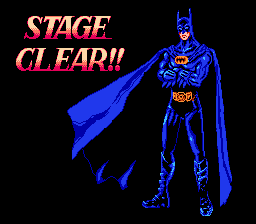
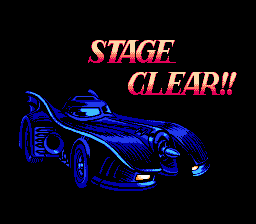
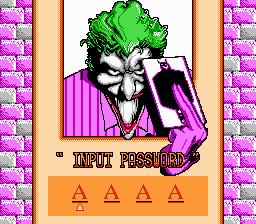
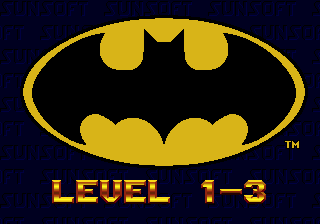
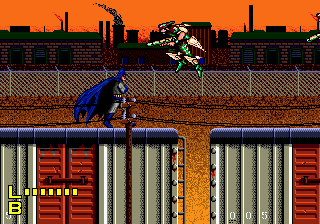



Reviews
There are no reviews yet.